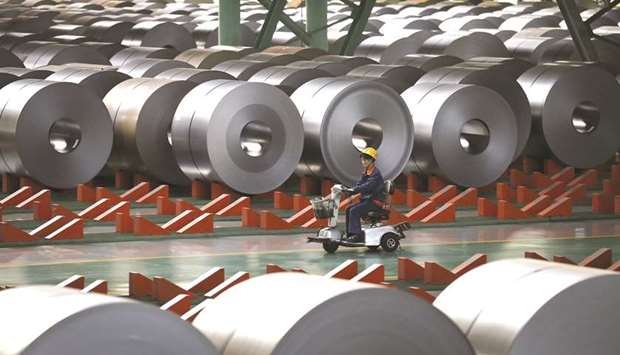Japan’s top steelmakers, Nippon Steel & Sumitomo Metal Corp and JFE Holdings Inc, and its largest maker of aluminium products, UACJ Corp, all rose in Tokyo, while Posco, South Korea’s biggest steel mill, fell slightly. The reactions came as President Donald Trump’s administration weighs tariffs as high as 53% on steel and 23.6% on aluminium.
The proposals risk a chain effect under which restrictions on US imports encourage other nations to impose duties – top producer China has already warned as much – or divert shipments to alternative markets, SMBC Nikko Securities Inc said in a note. Still, the direct impact on Japanese steelmakers should be limited given the small volumes the country sends to the US, the brokerage said.
The aim of the tariffs is to boost US output to at least 80% of capacity by cutting steel imports by 13.3mn metric tonnes and aluminium imports by 669,000 tonnes, according to the Commerce Department. Those volumes represent less than 1% of world steel supply outside the US, and about 1% of aluminium output.
Some smaller companies did see more significant gyrations in their shares. In South Korea, SeAH Steel Corp, which sells pipes to the US, dropped as much as 7.6%, while Japan’s Yamato Kogyo Co gained as much as 8% because of its large US operation that would be untouched by duties. The impact on other producers such as Luxembourg-based ArcelorMittal and Brazil’s Gerdau SA would also be cushioned by their significant US businesses.
South Korea is one of 12 countries, including China, that could be subject to the higher steel tariff, but which excludes Japan and Canada, the top supplier to the US. A second option presented by Commerce would be a duty of 24% on all countries.
For aluminium, Trump’s options also include a higher tariff, of 23.6%, on five major suppliers including China and Russia. The other possibility is an across-the-board levy of 7.7%.
There’s a risk that more Chinese aluminium will flow into Asian markets, weighing on prices, if the US blocks imports from the top producer, a spokesman for Japan’s UACJ said by phone. Broad restrictions on imports would result in lower aluminium prices in China and on the London Metal Exchange, while lifting premiums in the US, Goldman Sachs Group Inc said last month.
Although the proposed measures to protect US metal producers from cheap imports drove up their shares, American companies that make products from steel and aluminium weren’t so lucky. Stocks of Ford Motor Co and General Motors Co slumped Friday amid fears expressed by some lawmakers that trade protections would push up costs for domestic manufacturers.
Trump has until mid-April to decide on any potential action and could still seek negotiations with producers. The president last year ordered Commerce to probe whether imports of steel and aluminium imperil US national security, invoking the seldom-used Section 232 of the 1962 Trade Act, which allows the president to impose tariffs without congressional approval.
China, the main target of the proposals, said Saturday the US already has excessive protections on domestic iron and steel products and that it reserves the right to retaliate. The nation’s financial markets are closed for most of this week for the Lunar holiday, although trading in Hong Kong, where some metals firms have listings, will resume Tuesday.
China has long been at the epicentre of global over- production of steel. But the trade dynamics are shifting as aluminium exports take centre stage. In January, China boosted its shipments of the lightweight metal for a third month, as domestic supplies spill overseas, while steel cargoes shrank to the lowest in nearly five years as strong domestic growth mops up production and environmental curbs trim capacity.
China has long been at the epicentre of global over-production of steel. But the trade dynamics are shifting as aluminium exports take centre stage. In January, China boosted its shipments of the lightweight metal for a third month, as domestic supplies spill overseas, while steel cargoes shrank to the lowest in nearly five years as strong domestic growth mops up production and environmental curbs trim capacity

